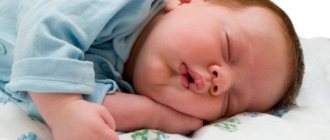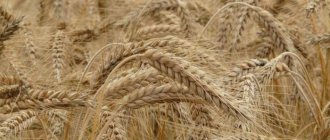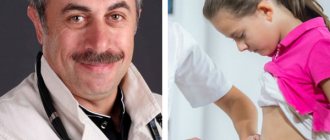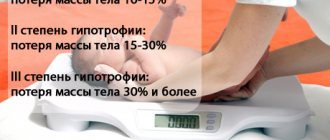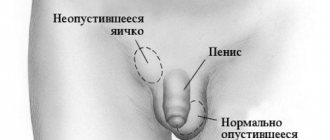Home / Children / Baby
Back
Published: 01/13/2021
0
274
Apnea in newborns is a dangerous pathological condition caused by disruption or complete cessation of pulmonary ventilation for a period of 15 seconds. Premature and full-term infants and children of the first years of life are more susceptible to complications.
Periodic holding of breath (obstructive apnea syndrome) will not go away on its own. To avoid serious consequences, the first signs of the disease require immediate medical intervention.
- 1 Respiratory function and apnea
- 2 Symptoms
- 3 Causes of breath holding
- 4 Types (types) of apnea
- 5 Features of treatment 5.1 First aid
- 5.2 Medical assistance
- 5.3 Prevention and risk factors
Types of breathing
Breathing of the embryo begins in the middle of pregnancy. Oxygen enters the fetal body through the placenta. After birth, the baby takes its first breath. At this moment, the glottis opens and the lungs expand.
There are several types of breathing in young children:
- Regular – it is characterized by uniform inhalations and exhalations. There is an equal interval between them.
- Irregular - this type is characterized by the absence of a uniform interval between breaths. This type of breathing is often observed in babies who were born prematurely.
- Periodic – this type of breathing is characterized by cyclicity. In such a situation, insufficient ventilation is replaced by hyperventilation. There is also a short delay in breathing. It lasts no more than 3 seconds.
- Apnea is an abnormal phenomenon that is accompanied by a temporary cessation of breathing. This is due to blockage of the respiratory system and the absence of an impulse that comes from the brain to the organs of the respiratory system. Such attacks last more than 15 seconds. Sometimes there is a short delay, but it is accompanied by signs of bradycardia. It is worth considering that serious respiratory arrest poses a threat to life.
Prolonged neonatal apnea causes carbon dioxide to accumulate in the blood. As a result, the child loses consciousness, there is brain damage and developmental delays.
The most dangerous consequence of the anomaly is death. Attacks of respiratory arrest usually occur at night, making it difficult for parents to identify the symptoms of the abnormality in time.
Experts distinguish the following types of apnea:
- Central - this condition is characterized by cessation of breathing, associated with the cessation of the signal from the brain to the muscle tissues responsible for breathing;
- Obstructive – this pathology is accompanied by frequent attacks of hypoventilation and respiratory arrest. The cause of the disease is the tongue blocking the respiratory tract;
- Mixed - apnea attacks are associated with the influence of both categories of factors.
Signs of apnea
If you hold your breath for a long time (10 seconds or longer), blue skin (especially the area around the mouth), or a sharp slowdown in heart rate (less than 100 beats/min), you should be examined by a pediatrician.
Apnea in children is manifested by the following symptoms:
- Mainly mouth breathing. This sign indicates that the child does not have enough air coming through the nose.
- Difficulty swallowing. If the baby has difficulty swallowing, the cause may be a partial blockage of the airways.
- Enuresis. Loss of urinary control is a secondary symptom that indicates a dysfunction of the central nervous system.
- Excessive sweating. Excessive sweating in an infant also indicates a disturbance in the functioning of the central nervous system.
- Excessive contraction and drooping of the chest when exhaling. This symptom indicates a breathing disorder.
- Unusual positions in sleep. This is how the baby tries to compensate for the lack of oxygen while sleeping on his back, since in this position the respiratory tract may be partially blocked. As a result, gas exchange is disrupted.
Thus, if there are no respiratory movements (the chest does not move), bradycardia appears (pulse less than 60 beats/min), and the skin on the face turns blue (especially around the mouth), then we are talking about apnea. If the attack is caused by a blockage of the airways, wheezing, noisy breathing occurs that resembles snoring.
Causes of pathology
The appearance of an anomaly may be due to the influence of various factors. This category includes congenital defects, hereditary predispositions, and acquired diseases. Attacks are often caused by external factors - hypothermia or exposure to high temperatures.
In young children, during REM sleep, respiratory abnormalities occur, which lead to abnormalities in the functioning of the respiratory system.
Apnea most often occurs in premature newborns. This situation is caused by respiratory distress syndrome. The cause is insufficient maturity of the lung tissues and a deficiency of surfactant - a mixture of substances that lines the inside of the alveoli of the organ.
Respiratory disorders may be associated with various maternal pathologies. These include heart and vascular diseases, diabetes mellitus, bleeding from the uterus, and the risk of miscarriage. Hypoxia or asphyxia of the child during intrauterine development also becomes a provoking factor.
Apnea occurs under the influence of various factors. The central form is caused by problems with the functioning of the brain center responsible for breathing. It also leads to diseases of the lungs and heart. In this situation, causes of apnea in newborns include the following:
- Diseases of the nervous system associated with birth injuries or infectious pathologies during fetal development;
- Smoking by the mother during pregnancy;
- Congenital heart lesions;
- Prematurity of the child;
- Down syndrome;
Mother smoking
Congenital heart lesions
Prematurity of the child
Down syndrome
- Low birth weight;
- Meningitis;
- Bronchopulmonary dysplasia;
- Epilepsy;
- Cerebral palsy;
- Mitochondrial abnormalities.
Meningitis
Epilepsy
Bronchopulmonary dysplasia
cerebral palsy
The following factors lead to the obstructive form of apnea:
- Pathologies of ENT organs;
- Excess weight;
- Swelling of the mucous membranes of the pharynx or larynx due to viral infections or allergic reactions;
- Constant regurgitation;
- Weakening of the tone of muscle tissue due to the recession of the tongue during sleep;
- Abnormal structure of the respiratory tract;
- Malocclusion.
Complex diseases most often lead to a mixed form of pathology. Attacks of respiratory arrest are caused by the influence of two categories of factors at once.
Causes of breath holding
Apnea in an infant develops against the background of concomitant unfavorable factors. They lead to a malfunction of the respiratory system, resulting in breath holding.
Factors causing the disease include:
- The birth of a baby before the due date (prematurity) with insufficient body weight (less than 2.5 kg). In most cases, apnea is diagnosed precisely because of the immaturity of the respiratory system.
- Difficult labor and complications for the fetus during it (asphyxia, intrauterine pneumonia, etc.).
- Pathological changes in the functioning of the respiratory system in the first days and weeks after childbirth.
- Heart disease and other congenital heart pathologies.
- Inflammation of the membranes of the brain (meningitis).
- Reverse movement of gastric contents (gastroesophageal reflux).
- The body's reaction to taking medications.
Stopping breathing is also observed against the background of immaturity of the laryngeal muscles. This is the so-called “mechanical” apnea. The child frantically tries to swallow saliva, opening his mouth wide.
Neurological disorders are one of the causes of impaired inhalation-exhalation rhythm in a child of the first year of life. Seizures are considered a concomitant sign of pathology.
To eliminate breath holdings, you should make an appointment with a neurologist. He will diagnose and tell you how to treat the disease.
Symptoms
It is easier to identify problems in premature babies. After birth, they are placed in special incubators equipped with innovative medical equipment.
Such children are in intensive care. They are also often admitted to the intensive care unit.
Doctors constantly monitor the condition of such patients. Special monitors display the functioning of internal organs. Therefore, if breathing stops, the child receives prompt medical attention.
In full-term infants, the following manifestations help identify apnea:
- Blue discoloration of the skin, nails, and nasolabial triangle area. These manifestations indicate impaired blood flow and lack of oxygen;
- Deviations in the functioning of the nervous system. Associated symptoms of this condition include the appearance of involuntary urination. However, identifying this symptom in newborn babies is very difficult;
- Asymmetrical movement of the chest;
- Slowing heart rate;
- Airway problems. This symptom occurs in case of respiratory obstruction. It is accompanied by the appearance of noise, snoring, whistling;
- Changing your child's sleep. In this case, the baby is constantly spinning. His body periodically takes an unnatural position. The cause of the problems is oxygen deficiency;
- Breathing through the mouth. This symptom is present both day and night;
- Excessive sweating;
- Snoring (more about children's snoring);
- Long intervals between breaths. They are present for more than 20 seconds;
- Shortness of breath after normalization of respiratory functions.
This syndrome is more common in babies in the first weeks of life. However, sometimes it occurs in older children. This process is accompanied by an increase in apnea symptoms. This allows parents to take adequate measures in a timely manner.
Diagnosis and treatment of sleep breathing disorders in childhood
In outpatient pediatric practice, it is often necessary to listen to parents’ complaints about episodic or constant snoring of a child during sleep. Snoring usually increases during infectious diseases and during the flowering season of pollen plants.
Questions arise: how dangerous is it for the child’s health, and can this snoring be considered only as a cosmetic problem, as is customary in adult patients?
Snore
is a sound phenomenon emanating from the level of the upper respiratory tract and arising from vibration of the uvula, soft palate, palatine arches and some other structures of the pharynx. There are episodic and habitual (constant) snoring. Episodic snoring occurs in almost any adult or child due to physical fatigue or diseases of the upper respiratory tract. Habitual snoring that occurs 6-7 times a week is considered a medical problem.
The cause of snoring is either hypotonia of the muscles that make up the soft tissue structures of the pharynx, primarily the uvula and soft palate, or an increase in the speed of the respiratory air flow during inspiration in the presence of narrowing at the level of the upper respiratory tract. In childhood, the cause of such narrowing is most often hyperplasia of the Pirogov-Waldeyer pharyngeal lymphoid ring with enlargement of the pharyngeal (adenoids) or palatine tonsils. Also, the acceleration of air flow can be caused by narrowing of the nasal passages due to a curvature of the nasal septum, rhinitis, as well as congenital anomalies in the development of the bone skeleton with the formation of micro- and retrognathia (for both the upper and lower jaws) and acquired defects of the lower jaw (with rheumatoid arthritis , osteomyelitis of the lower jaw). Unlike adults, obesity rarely causes snoring in children. Snoring is considered the loudest in the deep (3rd) stage of slow-wave sleep and the REM sleep phase [1].
In the pediatric population, the prevalence of snoring ranges from 10 to 12%.
In the modern International Classification of Sleep Disorders, 3rd revision (ICDS-3) [4], habitual snoring is considered as an isolated symptom that does not affect human health. Despite the fact that a number of researchers, in particular E. Lugaresi [9], consider it as a stage of the disease of “heavy snorers”, which will certainly someday turn into a more severe condition with multiple sleep apneas, there is convincing evidence of the harm of habitual snoring on the health of children There are no populations.
In order to recognize a child’s snoring as harmless, “primary”, an overnight polysomnographic study is required. This involves recording during night sleep indicators of snoring, breathing, blood oxygen saturation and a number of electrophysiological parameters necessary for accurate verification of sleep state and its stages (EEG, EMG, electrooculogram). If, during a study against the background of snoring, the number of episodes of breathing disorders during sleep (apnea and hypopnea) is within the normal range (less than 1 episode per hour), then the diagnosis of primary snoring is confirmed and formulated indicating the ICD-10 coding as follows: “snoring” ( R06.5).
Treatment tactics in case of uncomplicated snoring in a child are expectant. It is necessary to find possible causes of narrowing of the upper respiratory tract: chronic inflammatory diseases of the upper respiratory tract, allergic conditions, defects in the development of the facial skeleton. The prognosis is favorable, since against the background of growth of the facial skeleton, its relative clearance increases, the speed of air flow during inspiration slows down, and snoring most often disappears.
Moans of sleep (catathrenia)
are specific sounds (resembling moans or mooing) that occur during the period of prolonged exhalation in some people, most often during REM sleep. The onset of the episode is accompanied by a deep breath, during which the breathing is slow, which is why catophrenia is sometimes referred to as bradypnea.
This condition is more common in children and male adults; it has no clinical consequences, but it causes difficulties in social functioning and frightens parents, which is why they seek help.
The causes and treatment options for catophrenia are unknown.
The diagnosis is formulated as follows: “catathrenia” (G47.8).
The course of this condition is benign, it does not cause clinically significant consequences, however, it is not curable. In some cases (approximately 1/3), the use of over-mask ventilation with continuous positive pressure during sleep (CPAP therapy) is effective, but the effect persists only while using the method [7].
Pediatric obstructive sleep apnea syndrome
characterized by multiple episodes of upper airway obstruction during sleep, often accompanied by episodes of decreased oxygen saturation (desaturations).
Snoring is one of the clinical manifestations of this condition. Its peculiarity is its intermittent nature, when breathing sounds are interspersed with respiratory pauses (apnea). Children are not as likely as adults with obstructive sleep apnea to wake up at night from episodes of obstruction, and they usually do not complain of sleepiness during the day. An analogue of excessive daytime sleepiness, especially in preschool children, is hyperexcitability and uncontrollable behavior.
Often in this case a diagnosis of attention deficit hyperactivity disorder is made. During sleep, children with periods of obstruction visually notice unusual phenomena - hyperreflexia of the back of the neck to facilitate breathing and paradoxical retraction of the chest during episodes of ineffective respiratory efforts.
A characteristic clinical symptom of obstructive sleep apnea in children is excessive sweating during sleep and frequent cases of nocturnal enuresis.
It has been shown that the presence of this condition in a child significantly affects the rate of his physical and mental development. Such children gain weight more slowly (they have a confirmed decrease in the secretion of growth hormone and its mediators), and perform worse in educational institutions. The presence of obstructive sleep apnea leads to an increase in systemic blood pressure and the development of cor pulmonale.
Among the causes of the development of obstructive sleep apnea in children, adenotonsillar hypertrophy is primarily called. The proliferation of lymphoid tissue of the pharyngeal ring observed in frequently ill children leads to a significant narrowing of the lumen of the upper respiratory tract at the level of the nasopharynx and oropharynx. A rarer cause of sleep disordered breathing in childhood than in adults is obesity.
Various types of genetic anomalies and developmental anomalies of the maxillofacial region are accompanied by pathology of breathing during sleep starting from early childhood. In Down's disease, the cause of obstructive apnea is macroglossia, in Croison's syndrome - a small upper jaw, in Treacher-Collins syndrome - mandibular hypoplasia. From the first days of life, apnea is found in children with Pierre Robin syndrome due to mandibular hypoplasia and glossoptosis. Other factors that contribute to the development of upper airway obstruction during sleep may include allergic conditions, diseases of the upper and lower respiratory tract. A genetic predisposition to the development of obstructive sleep apnea syndrome in childhood has not been identified.
The prevalence of this condition in children is estimated at 1-4% of cases, with a peak incidence occurring at 2-3 years of age. Unlike adults, where men are more often affected, in children there is approximately the same frequency of detection of the syndrome among boys and girls.
To confirm the diagnosis of childhood obstructive sleep apnea, an overnight polysomnographic study is required (Table 1).
The diagnosis is formulated as “childhood obstructive sleep apnea syndrome” (G47.3).
Treatment of childhood obstructive sleep apnea is aimed at eliminating the etiological factor. Because adenotonsillar hypertrophy is the most commonly suspected source of difficulty breathing, adenoidectomy is suggested. The effectiveness of this method reaches 85%, and within 1 month after surgery, along with the symptoms of obstructive apnea, associated conditions such as nocturnal enuresis, hyperhidrosis, and sleepwalking go away [8]. A predictor of the effectiveness of adenoidectomy is the preoperative indicator of the number of breathing disorders during sleep - the higher it is, the more breathing will improve after surgery. Tonsillectomy concurrent with adenoidectomy has been shown to significantly reduce the likelihood of recurrence of sleep breathing problems. In domestic pediatric practice, the decision to perform an adenoidectomy is made extremely reluctantly, often in the presence of already formed disproportions of the facial skeleton. In this case, conducting an overnight polysomnographic study with the identification of a large number of obstructive apneas can become a very compelling and timely argument in favor of using a surgical method for treating “adenoids.”
If no obvious ENT pathology is detected in a child with obstructive sleep apnea, it is recommended to conduct an X-ray cephalometric study to assess the size of the upper respiratory tract to search for the causes of obstruction. In the presence of pronounced disorders, reconstructive operations are performed, such as mandibular distraction, maxillary extension and truncation of the root of the tongue. If the cause of the development of breathing disorders during sleep in a child is excess weight, measures are taken to reduce it.
Quite often, parents of children with a confirmed diagnosis of obstructive sleep apnea refuse surgical treatment or the cause of the obstruction cannot be identified. In this case, it is recommended to use overmask ventilation with continuous positive pressure during sleep (CPAP therapy). Before going to bed, a silicone mask is fixed on the child’s face using straps, through which air is constantly supplied under low pressure (see picture). Prevention of obstruction is achieved due to the fact that positive air pressure is constantly maintained in the airways (both during exhalation and inhalation), forming an “air tire” that prevents their walls from collapsing. As a side effect, snoring stops immediately. The selection of effective air pressure is carried out in a hospital setting, under the control of polysomnography.
While the child sleeps with the CPAP therapy device, he is completely protected from both episodes of breathing disorders and their consequences. Sleep is normalized (motor activity decreases, sweating and enuresis stop), daytime functioning improves (the child becomes calmer, more attentive, and less tired). However, this effect lasts only for the duration of use of the device - 1-2 days after discontinuation, the symptoms of obstructive sleep apnea return. Thus, the CPAP therapy method does not lead to a cure, but it allows you to spend time (months and years) without harm to the child’s health, waiting for the moment when the size of the airways becomes sufficient so that airway obstruction does not occur during sleep.
Accordingly, repeated polysomnographic studies (usually once a year) will be required to assess the dynamics of breathing during sleep and correct the pressure of the supplied air. The tolerability of treatment with CPAP therapy in the pediatric population reaches 72% [10]. Other treatment methods used in adults with obstructive sleep apnea syndrome are not used in pediatric practice. This applies to both orthodontic devices that advance the lower jaw, and a few medications that reduce the number of obstructive apneas (protriptyline, progesterone). Nasal glucocorticoid sprays have demonstrated limited effectiveness against apnea in children for apnea associated with adenoid hypertrophy [6].
Primary central sleep apnea of infants
is characterized by the occurrence of multiple prolonged, predominantly central sleep apneas in full-term infants (from 37 weeks of pregnancy).
These events are accompanied by manifestations of hypoxemia and bradycardia and may even require resuscitation measures. Along with central ones, obstructive and mixed sleep apnea/hypopnea can be observed, but their number is invariably less than episodes of a central nature. Apnea or hypopnea is recognized as central when the cessation of respiratory air flow occurs against the background of the absence of respiratory movements of the chest and abdominal walls, i.e. one or more respiratory impulses are lost.
The main pathophysiological mechanism for the development of central sleep apnea at this age is the immaturity of the stem respiratory centers or their connections. In a newborn or infant, apnea can be provoked or aggravated by the presence of concomitant pathology, such as anemia, infectious disease, metabolic disorders, gastroesophageal reflux, or the use of drugs and anesthetics.
If the cause of infant sleep apnea is organic or functional disorders, then we are talking about secondary central sleep apnea syndrome.
Symptomatic infant apnea occurs in less than 0.5% of full-term newborns. 2% of healthy 6-month-old children have at least 1 episode of central apnea lasting longer than 30 seconds. The incidence of this condition among boys and girls is almost the same. During the first year of life, apnea stops in most children, which is associated with the completion of myelination of the stem centers (Table 2).
Methods for correcting this condition will be discussed in conjunction with the treatment of children mentioned in the next section.
Primary central sleep apnea of prematurity
has the same clinical characteristics as the above-mentioned central sleep apnea of infants, differing from it only in the post-conceptional age of children with breathing problems during sleep.
The prevalence of primary central sleep apnea of prematurity varies depending on gestational age. The causes of respiratory arrest during sleep may be immaturity of the central nervous system and concomitant treatment. As the child develops, the condition gradually improves.
Approximately 25% of infants weighing less than 2500 g and 84% weighing less than 1000 g have symptomatic central sleep apnea during the neonatal period. The incidence of this condition in boys and girls is almost the same. Upon reaching the post-conception age of 37 weeks, apnea ceases in 92%, 40 weeks - in 98% of children.
As in the case of primary central sleep apnea of infants, factors provoking the development of apnea of prematurity are gastroesophageal reflux, intracranial hypertension, metabolic disorders, and infectious diseases.
Despite the name, polysomnographic studies demonstrate that in most cases of primary central sleep apnea syndrome, prematurity apnea and hypopnea are mixed (50-75% of all episodes) (Table 3).
The diagnoses of these two closely related types of sleep breathing disorders are formulated respectively as “primary central sleep apnea of infancy” (P28.3) and “primary central sleep apnea of prematurity” (P28.4). The choice of treatment for central sleep apnea of infant or prematurity depends on the probable etiological factor and the predominant type of breathing disorders during sleep (central or obstructive). For apnea of prematurity, which is predominantly central in nature, the drug of choice is caffeine citrate at a loading dose of 20 mg/kg orally or intravenously and then at a maintenance dose of 5 mg/kg daily. Less commonly, theophylline is prescribed in a loading dose of 5-6 mg/kg and a maintenance dose of 2.0-6.0 mg/kg per day, divided into 2-3 doses. Aminophylline can be used as an intravenous form of theophylline in a loading dose of 5-7 mg/kg and a maintenance dose of 1.5-2.0 mg/kg every 6-8 hours intravenously.
Caffeine is less likely to cause sleep disturbance than theophylline. The use of caffeine for apnea of prematurity has been shown to reduce the incidence of cerebral palsy (odds ratio 0.58) and psychomotor delay (odds ratio 0.81) [1, 2].
In the presence of severe hypoxia during sleep with central apnea of prematurity, the effect of oxygen therapy is indicated.
If a large number of obstructive breathing disorders are suspected, CPAP therapy or intermittent positive pressure ventilation are used. Both methods turned out to be comparable in effectiveness.
The effectiveness of treatment is periodically monitored using polysomnography or cardiorespiratory monitoring; the possibility of stopping treatment is usually discussed after the age of 6 months, when the risk of developing sudden infant death syndrome is significantly reduced.
Other sleep breathing disorders mentioned in ICRS-3 can occur in childhood, but their prevalence in the general population and even their occurrence in general clinical practice is low. Pediatricians and neurologists may encounter cases of secondary hypoventilation during sleep. Various diseases of the lungs, chest wall, and diseases of the neuromuscular system can cause the development of this condition. Impaired pulmonary ventilation in such patients worsens during sleep (especially during REM sleep). Patients may complain of chest heaviness, shortness of breath and general weakness. Secondary hypoventilation syndrome usually begins with mild shortness of breath against the background of minimal physical activity, with a gradual worsening of the disturbances, initially only during sleep, then up to the development of hypercarbia during wakefulness. Common complications of this hypoventilation syndrome are pulmonary hypertension, cor pulmonale, heart failure, polycythemia, and death.
It has been shown that timely administration of ventilation support during sleep (transmask two-level continuous positive pressure ventilation - BayPAP therapy) prolongs the period of functional compensation and increases the life expectancy of such patients [5].
Cases of congenital central alveolar hypoventilation syndrome
(Ondine's Curse syndrome) are caused by dysfunction of central respiratory regulation due to a mutation in the
PHOX2B
.
The mutation is often accompanied by other developmental anomalies: in 16% of cases, Hirschsprung's disease (intestinal agangliosidosis), peripheral autonomic failure, tumors of the nervous system (ganglioneuromas and ganglioneuroblastomas). About 200 cases of this disease have been described. Cases of central hypoventilation with hypothalamic dysfunction and late onset
and
idiopathic central alveolar hypoventilation syndrome
are probably even less common. Patients require lifelong ventilator support and/or oxygen therapy during sleep.
Despite the heterogeneity of the problems of breathing disorders during sleep in children, in real clinical practice, doctors most often have to deal with obstructive sleep apnea and snoring and choose between surgical intervention and conservative treatment.
Once again, it is worth emphasizing that a sleep study in this case helps to make the right choice and convince the patients’ parents of this.
About the author
Mikhail Guryevich Poluektov -
Candidate of Medical Sciences, Associate Professor of the Department of Nervous Diseases of the Institute of Professional Education, place of work of the State Budgetary Educational Institution of Higher Professional Education “First Moscow State Medical University named after. THEM. Sechenov" of the Ministry of Health of Russia
e-mail
Degrees
The severity of the disorder is determined depending on the number of attacks during the night:
- Mild form – the child experiences 5-20 apnea attacks;
- Moderate severity - the number of episodes of respiratory arrest does not exceed 40;
- Severe form – the number of attacks is more than 40.
Prolonged attacks of sleep apnea, which are combined with a slow heart rate, provoke a deterioration in cerebral circulation. In such a situation, the child’s muscle tone is weakened and the skin tone is disturbed.
Frequent occurrence of attacks causes oxygen deficiency, acid-base imbalance, and carbon dioxide poisoning. All these factors lead to serious deviations in the functioning of the child’s internal organs.
Dangerous consequences of apnea in children
Periodic pauses in breathing threaten the child’s health. The most severe case is sudden infant death syndrome. Lack of oxygen leads to pathological changes in the baby’s body and negatively affects its development and behavioral reactions. The following consequences are likely:
- Syndrome of disobedience and hyperactivity. The child has a reduced concentration of attention and memory, his actions are impulsive, his behavior shows nervousness, tearfulness, and whims for no reason.
- Deterioration of the cardiac system with periodic surges in blood pressure. The body, trying to compensate for oxygen starvation, activates reserve mechanisms that increase blood circulation. The heart rhythm is disturbed, and over time this can result in heart failure syndrome.
- Failure of heart rate in the future threatens to result in atrial fibrillation.
- Night sleep disorder leads to drowsiness, lethargy and apathy during the daytime, as if the child falls asleep on the go.
Due to the severity of the pathology, episodes of apnea at night are recorded at intervals from 5 to 100 times, that is, the total time period is almost 4 hours. It is no wonder that the baby, suffocating in his sleep, sleeps restlessly and intermittently.
Diagnostic methods
To eliminate newborn apnea, it is necessary to determine the causes of its occurrence. To do this, you need to conduct a whole range of diagnostic studies:
- Ultrasound of the heart and brain;
- Computed and magnetic resonance imaging;
- Radiography;
- Encephalogram of the brain;
- Electrocardiogram;
- Holter cardiac monitoring.
Ultrasound of the heart and brain
Radiography
Encephalogram of the brain
Holter cardiac monitoring
Diagnostic methods are selected depending on the clinical picture of the pathology. If the doctor suspects abnormalities in the functioning of the cardiovascular system, he will refer the child for heart diagnostics.
Helping newborns with sleep apnea
Newborns with breathing problems may require hospital treatment. In such a situation, children are under constant monitoring.
Depending on the results shown by the sensors, certain types of assistance are used:
- stimulation of the respiratory center;
- artificial ventilation;
- pharmacological and oxygen therapy;
- CPAP therapy to prevent airway closure (positive pressure ventilation).
To reduce the risk of apnea, it is important to treat pathologies that cause breathing disorders.
You can reduce the frequency of attacks and their possible risk by following some simple rules:
- Regular walks in the fresh air, airing the room;
- Regulating the temperature and humidity of the room - the child should not overheat or become hypothermic;
- Clothes should be loose, made of natural cotton;
- Choosing the right firm mattress, you should not use a pillow;
- Place your baby to sleep on his side;
- If necessary, rinse the spout before going to bed;
- Quitting smoking during pregnancy;
- Finding the baby's crib in the same room as the parents.
In a critical situation, you should call an ambulance and take several slow breaths into the baby’s mouth with your own mouth. After resuming breathing movements, rub the child’s limbs.
Treatment methods
If apnea attacks occur, the child needs immediate assistance. Parents should do this. If in doubt, you should consult a dispatcher when calling an ambulance.
First aid
If an attack of respiratory arrest occurs at home, parents should call a team of doctors. Before she arrives, you need to do the following:
- Record the time and pick up the baby. He needs to be woken up. At this point, respiratory function usually returns to normal;
- If the baby does not feel better, he needs to be gently shaken;
- Move carefully along your feet. You also need to gently stroke your back;
- Massage the chest, legs, arms, ears;
- Wash your face with cold water.
If the above methods do not help, you need to give the baby a closed heart massage and artificial respiration. The child should be placed on a hard surface and his head tilted back slightly.
Open the child's mouth and cover the mouth or nose with your lips. At this time you need to take a slow breath. It is worth taking into account that a baby’s lungs are much smaller than those of adults. Therefore, it is not recommended to inhale too quickly and forcefully. This may cause dangerous consequences. If necessary, repeat another 4-7 breaths.
Medical assistance
Doctors' help is aimed at normalizing the functioning of breathing. It is also necessary to restore the functioning of the brain and heart. Doctors must take urgent action.
If the child's condition does not improve, he is hospitalized in intensive care. On the way to a medical facility, special devices are used - an oxygen mask. A special bag can also be used.
If an attack of apnea recurs periodically, you need to take radical measures:
- Increase the flow of oxygen into the incubator;
- Reduce the temperature in the incubator;
- Connect the child to a ventilator.
Drug therapy involves the use of drugs that help cope with the cause of the disease.
The provoking factor may be a respiratory infection or damage to the respiratory organs. The child is also prescribed medications to stimulate the respiratory center. They should be used after determining the cause of the disease.
Clinical manifestations
Obstructive and central forms of apnea in children may be accompanied by symptoms such as bradycardia, cyanosis and hypoxemia (decreased oxygen concentration in the blood). Syndrome (SIDS), which provokes sudden death in childhood, is often a consequence of combined pathologies - bradycardia and apnea, caused by a violation of neurohumoral regulation.
In the overall structure of mortality from sudden death syndrome in infancy, 18% of cases occur in premature newborns. However, SIDS does not directly correlate with apnea in the baby. Intermittent breathing during wakefulness and sleep in a child consists of 5-20 normal respiratory cycles, which alternate with episodes of respiratory arrest lasting up to 20 seconds.
More often, such phenomena have no clinical significance and regress on their own in the 1st year of life. Signs of respiratory distress (a life-threatening condition associated with lung dysfunction):
- Crepitation (a characteristic sound that occurs when the alveoli open), wheezing.
- Increased expansion of the wings of the nose.
- Retractions (decrease in volume) in the intercostal, subcostal area and in the area above the sternum.
- Decreased breathing, irregular breathing rhythm.
- Episodes of apnea and tachypnea (rapid shallow breathing).
- Arterial hypotension (low blood pressure).
- Cyanosis or paleness of the skin, mottled coloration of the skin.
Symptoms of respiratory distress may occur in infants immediately after birth or within minutes or hours. Snoring is a phenomenon that indicates the presence of pathology; it is an abnormal condition that requires examination if the causes are not related to a respiratory infection. Often a child who snores breathes with an open mouth. Repeated episodes of apnea in children after a year are accompanied by symptoms:
- Daytime sleepiness.
- Chronic migraine, pain in the head area.
- Nocturnal enuresis (urinary incontinence).
- Deterioration of cognitive abilities (memory, mental activity).
- Fatigue, chronic fatigue.
- Deterioration in school performance.
- Increased irritability, short temper.
A child who periodically stops breathing during sleep develops associated disorders and disorders. Such patients often exhibit behavioral disorders and ADHD (attention deficit disorder and increased physical activity). Research shows that children who breathe irregularly with episodes of apnea are 3 times more likely to fail in school. Such patients are more often diagnosed with pathologies of the heart and lungs.
Prevention
To avoid breathing problems in your baby and normalize his sleep, you need to follow the doctor’s basic recommendations. Parents should consider the following:
- Mattress hardness. When purchasing a bed and bedding, you need to pay attention to choosing a mattress. It is important that it is not too soft;
- Availability of a pillow. Doctors advise not to use this item until 1.5-2 years;
- Temperature indicators. To improve the quality of sleep, it is necessary to monitor the humidity parameters and temperature conditions in the child’s room. It is important to control that the baby does not overheat;
- Bed position. To ensure the safety of the child, his crib should be located not far from his parents.
The appearance of apnea in newborn babies poses a real threat to life. To cope with this condition and avoid negative health consequences, it is necessary to determine the causes of its occurrence. To do this, you should consult a doctor and undergo a comprehensive examination.
Diagnostic methods used for apnea
Research methods for this form of respiratory disorders can be divided into 3 main groups:
- related to identifying and studying the causes of respiratory patterns;
- aimed at identifying the frequency, duration and characteristics of apnea episodes;
- allowing to assess the severity of disturbances in the body due to respiratory arrests in children during sleep.
Parents of the child can obtain initial information about the characteristics of the pathology by observing his breathing during sleep. Cardio-respiratory monitoring provides more accurate data. A complex study is polysomnography, which provides observation of several parameters of the functioning of the child’s body during sleep.
